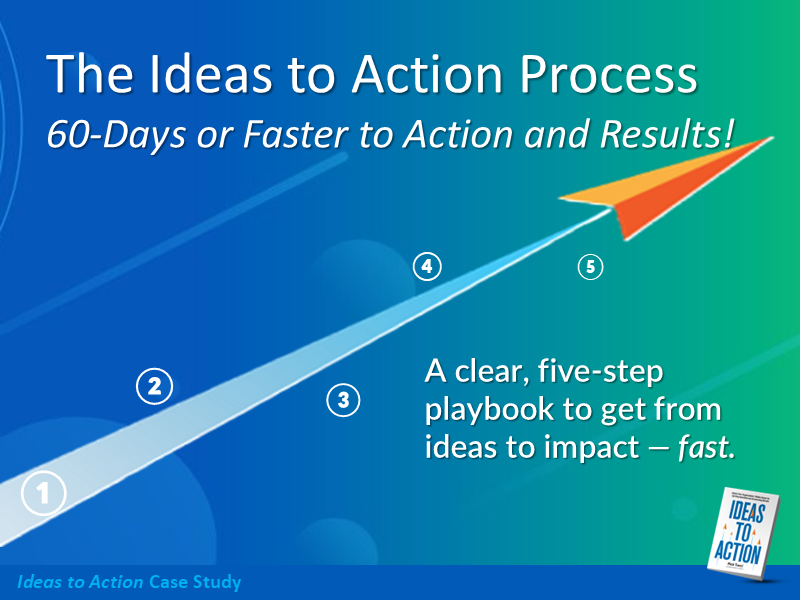Leaders everywhere know that change is hard. They’ve read the case studies, attended the workshops, and launched the initiatives—only to watch momentum fade.
Too often, the challenge isn’t lack of vision or even lack of commitment. It’s the absence of a process that bridges the gap between inspiring intentions and disciplined execution — one that’s adaptable, fast, and delivers results people can see, measure, and feel.
Traditional approaches like Lean, Agile, and Six Sigma offer rigor, but they can feel heavy, technical, or overly reliant on experts. On the other end of the spectrum, many engagement programs inspire employees but struggle to channel that energy into sustained results. What’s missing is a way to combine the best of both: the energy and ownership of frontline engagement with the structure and speed of proven improvement disciplines.
That’s where the Ideas-to-Action Process™ comes in—a versatile “Swiss Army knife” for change that works across industries, scales with teams of any size, and produces measurable results in as little as 60 days. It’s a blend of structure and speed, vision and discipline, that transforms enthusiasm into execution.
Case in Point: Closing a $22M Gap
At a national food distribution company, leaders faced a daunting $22 million profit gap. The clock was ticking—they had just six months to turn things around.
They used the Ideas-to-Action Process™ to close nearly half that gap—about $11 million—through frontline-driven improvements across 45 locations. Here’s how the five steps played out:
- Align and Target – Senior leaders set a bold, clear target: close as much of the gap as possible in six months. They communicated why it mattered and connected the goal to every location’s success.
- Launch Teams and Unleash Ideas – Each location formed a cross-functional “action team” and was encouraged to identify cost savings, service improvements, and efficiency opportunities from the ground up.
- Identify and Prioritize Actionable Ideas – Teams generated hundreds of ideas. Using a rapid filtering process, they prioritized high-impact, low-cost opportunities that could be executed immediately.
- Activate Action Champions and Execute – Local “Action Champions” were empowered to coordinate and drive implementation, ensuring momentum never stalled.
- Measure Results and Celebrate Success – Progress was tracked weekly, successes were recognized publicly, and results were shared across locations to inspire healthy competition.
By the end of the six-month sprint, the company had closed $11 million of the gap, boosted morale, and created a repeatable playbook for rapid improvement. It also set the stage for record profitability in the year ahead.
Why It Works
The Ideas-to-Action Process™ mixes rigor with humanity—something renowned social scientist and author Arthur Brooks says is critical for lasting change. In a recent Atlantic article, Brooks argued that organizations often focus on technical fixes while overlooking the human element: trust, ownership, and meaning.
The Ideas-to-Action Process™ integrates both, giving people a voice and a clear path to act on it.
The Takeaway
Whether you’re leading a turnaround, driving innovation, or simply trying to build a culture of continuous improvement, the challenge isn’t just coming up with ideas—it’s turning those ideas into results, quickly and repeatedly. The Ideas-to-Action Process™ does just that—often in just 60 days and faster!


